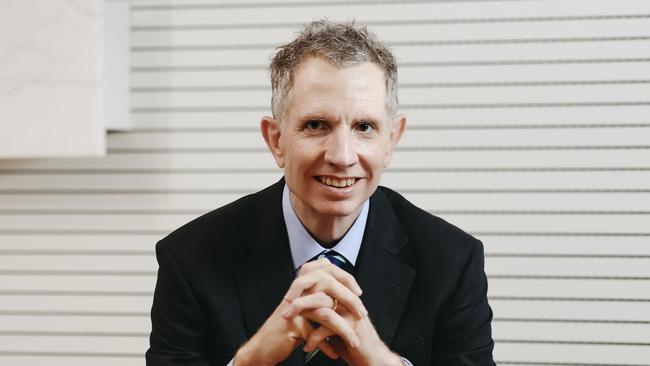Brace for a hard landing: Australian Retirement Trust CIO
Recession is still a possibility, due to slowing economic growth and rising unemployment limiting the chance of a soft economic landing, says Australian Retirement Trust’s Ian Patrick.

Business
Don't miss out on the headlines from Business. Followed categories will be added to My News.
Recession could still occur due to slowing economic growth and rising unemployment which may limit the chance of a soft landing for the economy, Australian Retirement Trust chief investment officer Ian Patrick believes.
Speaking to The Australian on Wednesday, Mr Patrick said he expected the Reserve Bank to be behind its peers in kicking off a rate-cutting cycle, but that this may help avoid an “extreme” hard landing.
“Soft landings are very, very rare. The ability to taper monetary policy that deftly – to slow economic growth but not hurt employment – just seems to me to be (unlikely),” Mr Patrick said.
“If you look back in history, it’s extremely rare and seems to be exceedingly difficult because the levers are so blunt. So I’m biased to a hard landing,” he warned.
While Mr Patrick expects economies to tip into recession as unemployment rises, he does not necessarily expect a severe downturn.
“Employment hasn’t dramatically softened (yet) but if you look at the number of roles created in the economy and underemployment, I think it’s starting to show signs of weakness. But that’s more so in some markets than others. The US still seems stronger than Europe or even Australia,” he said.
“How deep a recession might be the question. I don’t know that it’s a severe (recession).
“And it’s asynchronous – Europe has clearly rolled over, even perhaps Canada. But the more asynchronous, the better (to avoid) an extreme hard landing globally. So I don’t think it will be severe, but I do think there’ll be some moderation of employment,” Mr Patrick added.
Figures released on Wednesday revealed anaemic growth in Australia’s economy in the June quarter, with the economy propped by an increase in government spending as consumers cut back on discretionary items.
In the three months to June, Australia’s GDP expanded just 0.2 per cent, the Bureau of Statistics reported, as sticky inflation and high interest rates squeezed households.
The quarterly GDP reading saw annual economic growth slip to just 1 per cent, the slowest pace since the early 1990s, save for the pandemic years.
Treasurer Jim Chalmers said the sluggish growth figures were an “inevitable consequence of global economic uncertainty”.
Mr Patrick, speaking ahead of the GDP figures, warned inflationary pressures were still present in Australia and, combined with weak productivity growth, presented a challenge for the local economy.
“There’s still inflationary pressures here and income has probably grown faster in Australia (than elsewhere),” he said, adding that he expected the RBA to start cutting rates in early 2025.
The market is currently expecting the coming rate cuts would be good for equities, but Mr Patrick said that may not be the case.
“At the moment, on balance, it’s seen as a positive because a soft landing is the primary thesis. But if you drop the thesis of a soft landing, then (the outlook for markets) almost turns on a dime,” Mr Patrick said.
If there were any significant retracements in public markets, investors may not necessarily be able to take advantage of it because there is “no cash on the sidelines”, he added.
Turning to the rush into private markets by major institutional investors and the growing trend for companies to remain private rather than list publicly, Mr Patrick said the pool of capital seeking a home meant companies like Australian data centre operator AirTrunk no longer had to rely on public markets.
“I think what you’re seeing with AirTrunk is what (used to be) a higher risk, core-plus (investment) – maybe even higher up the risk spectrum than that – is now an infrastructure asset trading to more established owners,” he said.
“It’s mature now, it’s got the development pipeline in place, the business model is proven, and there’s the AI tailwind. All of those things have come together.
“For a growth business like that, being in private hands, as opposed to public hands, probably makes sense.”
Originally published as Brace for a hard landing: Australian Retirement Trust CIO



